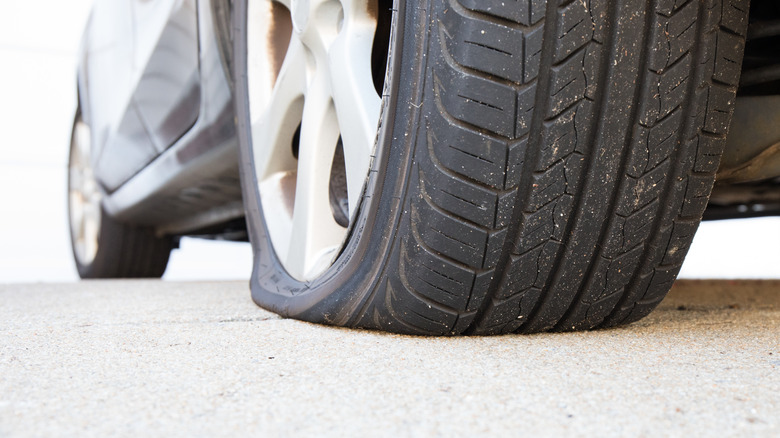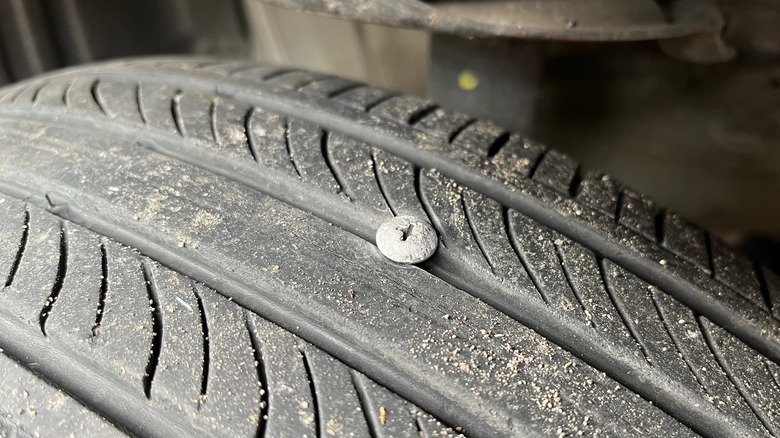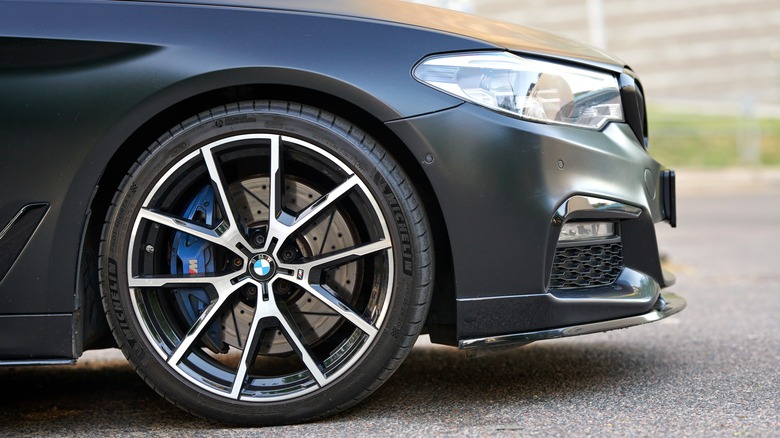RFT Vs Non-RFT Tires: What It Means And Which Is Right For Your Car
You may have heard of RFT tires before, but do you know how they differ from standard tires? The answer is straightforward: RFT stands for run-flat tire, which, as the name would suggest, is a tire that can continue to run, even when it's flat. In comparison, typical tires will, of course, need repairing or replacing when flat.
If you're wondering how run-flat tires work, there are two different types. The first is self-supporting, while the other is self-sealing. The former sports a stiff sidewall that can continue to support the vehicle after a loss of air pressure. The latter, meanwhile, has a thin layer of sealant — or a gel-like substance — inside that helps maintain air pressure after a puncture. Self-supporting run-flat tires continue to function even after all air pressure is lost, whereas self-sealing run-flat tires require some residual air pressure to work properly.
While the advantage of either type is clear, they aren't perfect. For instance, most run-flat tires can only be used for up to 50 miles, at a maximum speed of 50 mph, once punctured. Traditional non-RFT tires can't even do that, of course, but they do come at a much cheaper cost. In addition, they don't require complex tire pressure monitoring systems, either.
Not all cars can use run flat tires
By this point, run-flat tires might be sounding great to you, especially if you're unlucky enough to have experienced multiple punctures in the past, or just don't want to risk having to install a spare wheel at the side of the freeway any time soon. However, it's not advised to fit run-flats to a car that wasn't equipped with them when new. This is because automakers that use run-flat tires, like BMW, tend to adapt suspension and braking settings to suit the stiffer construction of a run-flat tire. Cars that were not designed to use them, then, may suffer from crashy or unpleasant handling when wearing the stiffer sidewalled tire.
It's also worth noting that any car with run-flat tires must have a functioning tire-pressure monitoring system, as otherwise it may be difficult to tell when air pressure is lost. While run-flats are designed to run with lower or no pressures, they can only do this safely for a certain amount of time or miles. Driving while unaware of this reduced pressure could result in drivers surpassing this safety point. Generally, then, it's best not to fit run-flats to a car that wasn't designed from the factory to wear them.
You should replace run-flats with run-flats
While the tech is impressive, run-flat tires do come with downsides, and a stiffer ride is the least of them. On average, run-flat tires cost in the region of 50% more than a comparable traditional tire. While they aren't the most expensive tires in the world, this does mean that replacing a set of four could consume a few hundred extra dollars. Fortunately, though, you can replace run-flat tires with conventional tires –- although that might not be the best move.
Cars equipped with RFTs from new will typically sport safety aids, such as anti-collision aids, ABS, chassis control, and skid prevention systems, which may have been programmed to work with RFTs. Replacing run-flat tires with traditional tires could cause these systems to function incorrectly after the tire change. It's also important to note that changing run-flat tires to conventional tires on a car that was sold new with the former could be considered a modification by the insurer, which may lead to issues with payouts after a claim. For these reasons, it's generally considered best practice to stick with run-flat tires on cars that left with them from the factory.


